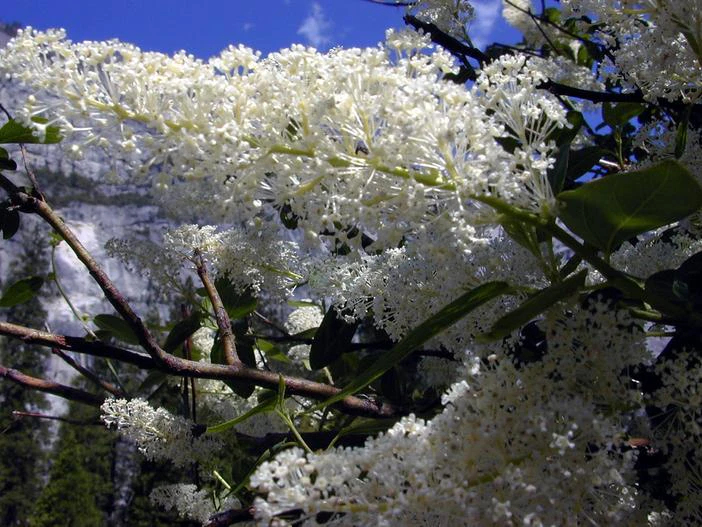Deer Brush
(Ceanothus integerrimus)
Deer Brush (Ceanothus integerrimus)
/
/

Dawn Endico
CC BY-SA 2.0






























































































Estimated Native Range
Climate Requirements for Logan City, Australia
| This Plant | Your Site | Plant Suitability for Your Location | ||
|---|---|---|---|---|
| • Precipitation | 6" - 87" | 49" | Aquatic | Aquatic |
| • High Temp. | 52°F - 106°F | 86°F | Your summer temperatures are normal for this plant. | Excellent |
| • Low Temp. | 7°F - 47°F | 47°F | OK, but your winter temperatures are warmer than normal for this plant | OK |
Summary
Deer Brush is valued for its drought tolerance and ability to fix nitrogen in the soil through symbiotic bacteria in its root nodules, enhancing soil fertility. Its low water requirements and adaptability to various soil drainage conditions make it a suitable choice for xeriscaping and native plant gardens. It is also used for erosion control due to its regenerative abilities through seed, shoot formation from the crown and stem, and layering. However, it should be noted that some Ceanothus species, including Deer Brush, may not resprout from the root after the crown has been burned in a fire, unlike many other chaparral species.CC BY-SA 4.0
Plant Description
- Plant Type: Shrub
- Height: 3-10 feet
- Width: 3-7 feet
- Growth Rate: Moderate
- Flower Color: White, Blue
- Flowering Season: Spring
- Leaf Retention: Deciduous
Growth Requirements
- Sun: Full Sun, Part Shade
- Water: Low
- Drainage: Fast, Medium
Common Uses
Bee Garden, Bird Garden, Butterfly Garden, Drought Tolerant, Edible*Disclaimer: Easyscape's listed plant edibility is for informational use. Always verify the safety and proper identification of any plant before consumption., Erosion Control, Fragrant, Groundcover, Hummingbird Garden, Low Maintenance, Showy Flowers
Natural Habitat
Chaparral and forest margins
Other Names
Common Names: Deerbrush Ceanothus
Scientific Names: Ceanothus integerrimus, Ceanothus integerrimus var. macrothyrsus, Ceanothus integerrimus var. californicus, Ceanothus integerrimus var. puberulus, Ceanothus nevadensis, Ceanothus integerrimus var. integerrimus, Ceanothus mogollonicus, Ceanothus peduncularis, Ceanothus puberulus
GBIF Accepted Name: Ceanothus integerrimus Hook. & Arn.